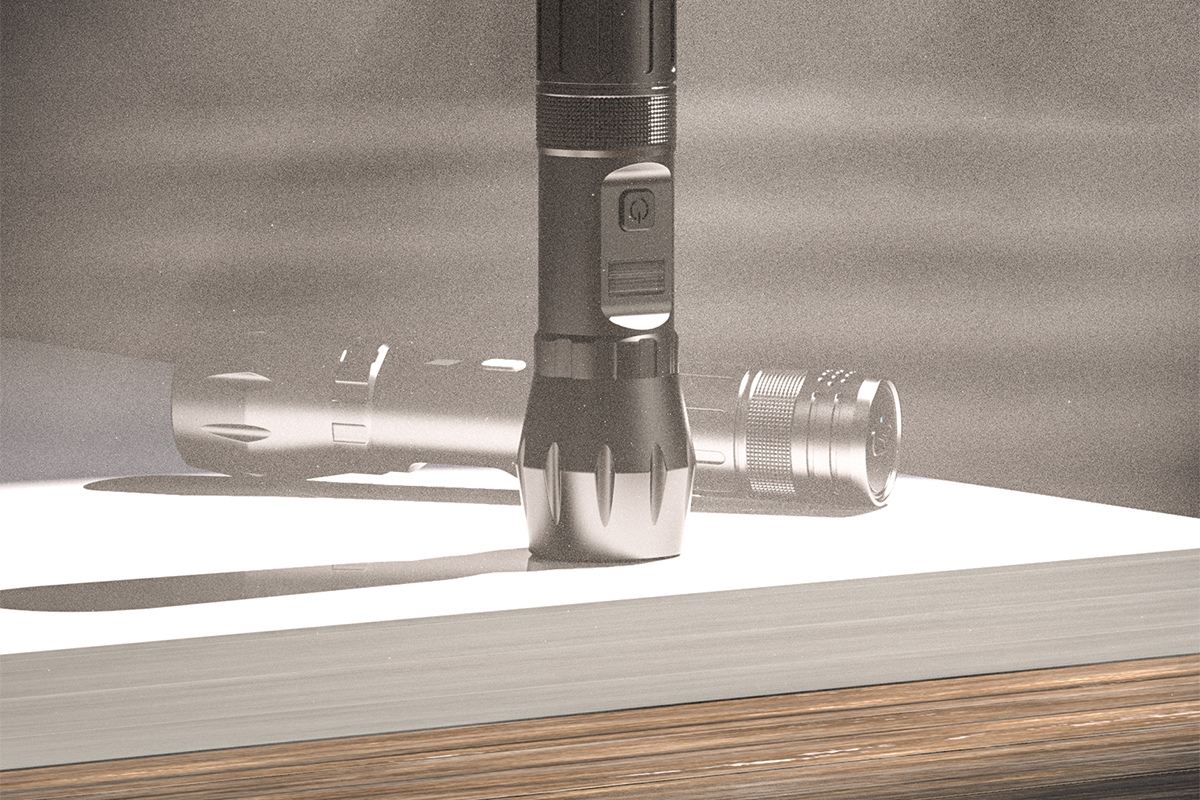
An infrared flashlight, also known as an IR flashlight, emits light that falls within the infrared portion of the electromagnetic spectrum. Unlike traditional flashlights that produce visible light, infrared flashlights generate light that is invisible to the human eye. While humans cannot see this light, certain devices, such as night vision equipment and infrared sensors, can detect and interpret it. In practical applications, infrared flashlights are often used in conjunction with devices or equipment that can pick up infrared light. The emitted infrared light is useful in scenarios where visible light might be impractical or undesirable, such as covert military operations, nighttime wildlife observation, or security and surveillance applications. The combination of an infrared flashlight with devices capable of detecting infrared light enhances visibility in conditions where visible light may be insufficient or undesirable, such as during nighttime operations or in areas with minimal lighting. This combination is often used in situations requiring discretion or stealth, such as military or law enforcement operations, where visibility without revealing one's position is critical.
The uses of infrared flashlights are diverse, spanning across different professional, recreational, and technological domains. Infrared flashlights are widely utilized in military and defense applications. They are often used in conjunction with night vision devices for covert operations, surveillance, and navigation in low-light conditions. Police and law enforcement agencies use infrared flashlights to enhance visibility during nighttime operations without revealing their presence to potential threats. Infrared flashlights are integral to security systems, especially in areas that require continuous monitoring. They provide discreet illumination for infrared cameras, allowing surveillance in low-light environments. Infrared flashlights are valuable tools for search and rescue operations, helping responders locate individuals in dark or challenging environments. Researchers and wildlife enthusiasts use infrared flashlights to observe nocturnal animals without disturbing their natural behavior. The invisible light allows for unobtrusive observation. Infrared flashlights find applications in specialized photography and filmmaking, particularly in scenarios where visible light might interfere with natural lighting conditions. Outdoor enthusiasts, such as campers and hikers, use infrared flashlights for navigation and tasks in low-light conditions. The invisible light helps maintain a low profile in natural settings. Infrared light is used in medical applications, including certain imaging techniques. Infrared flashlights may assist in medical examinations and procedures requiring specific types of lighting. Infrared flashlights are employed in industrial settings for tasks such as equipment inspection, where the ability to see heat signatures can be crucial. Infrared flashlights play a role in scientific research, particularly in experiments or studies that involve infrared radiation, heat detection, or spectroscopy. Some consumer electronics, such as remote controls or certain smart devices, use infrared signals for communication. Infrared flashlights may assist in testing or troubleshooting these devices.
The efficiency, wavelength control, compact design, and other attributes of LED technology have made it possible to create effective and practical infrared flashlights. LEDs can be engineered to emit light at specific wavelengths, including those in the infrared spectrum. This level of control over the emitted light allows for the precise tuning of LEDs for infrared applications. The choice of wavelength depends on the intended application, such as compatibility with night vision devices or other infrared-sensitive equipment. LEDs are small, compact, and lightweight. This allows for the creation of compact and portable infrared flashlights that are easy to carry and handle. The size advantage is particularly important in applications such as military operations, surveillance, and outdoor activities. LEDs are highly energy-efficient, converting a significant portion of electrical energy into light. This efficiency is vital for infrared flashlights, especially in applications where battery life is crucial. LEDs are solid-state devices, meaning they lack fragile components like filaments or glass bulbs found in traditional bulbs. This robust construction contributes to the overall durability of infrared flashlights.
The functionality and effectiveness of an infrared LED flashlight are the result of the cooperative interaction or synergy among various components. The arrangement of infrared LEDs in a flashlight can vary. Some infrared LED flashlights have a single high power LED, while others may have an array or cluster of mid-powers. The emitter configuration impacts the distribution and intensity of the emitted infrared light. Optical components, such as lenses and reflectors, play a role in shaping and directing the emitted infrared light. This influences the focus, spread, and reach of the light. Batteries provide the necessary power for the flashlight. The type, arrangement, and capacity of the batteries influence the runtime and overall performance of the flashlight. Integrated circuits and control mechanisms manage the operation of the flashlight. This includes features such as on/off controls, variable intensity settings, and different lighting modes. The switch configuration determines how the flashlight is activated and controlled. It can include simple push-button switches, rotary switches, or more complex interfaces for advanced functionality. The housing and construction materials, such as aluminum or other alloys, contribute to the durability and robustness of the flashlight. This ensures its ability to withstand environmental conditions. Some models may include mounting options for attaching the flashlight to equipment, clothing, or surfaces. Tactical flashlights may include features such as crenelated bezels for self-defense, weapon-mounting capabilities, or compatibility with other tactical accessories.







